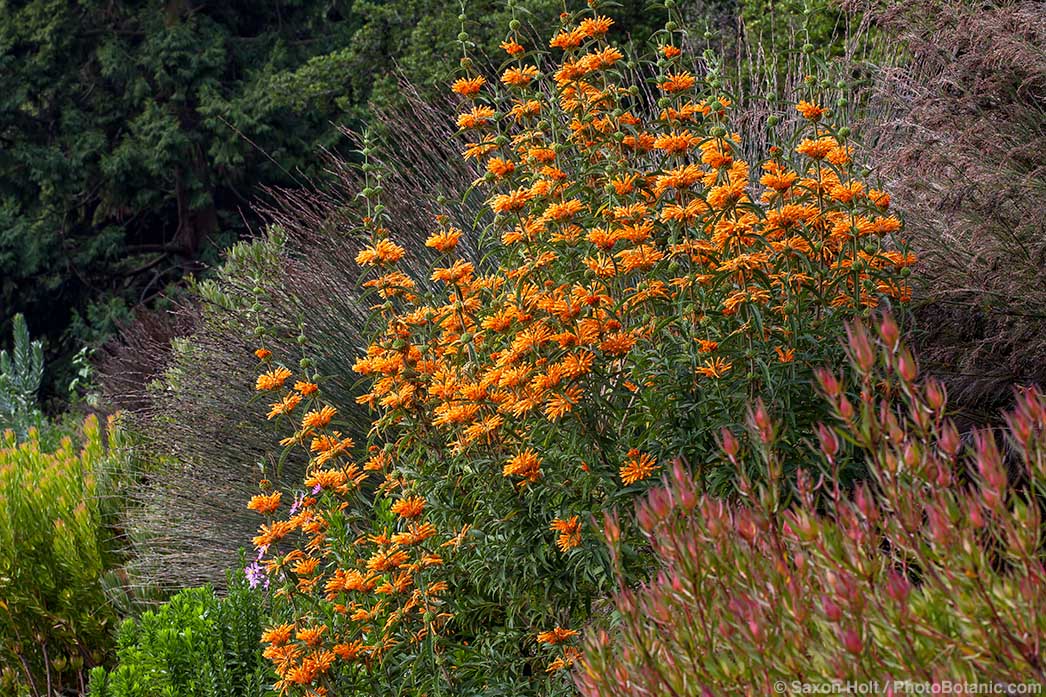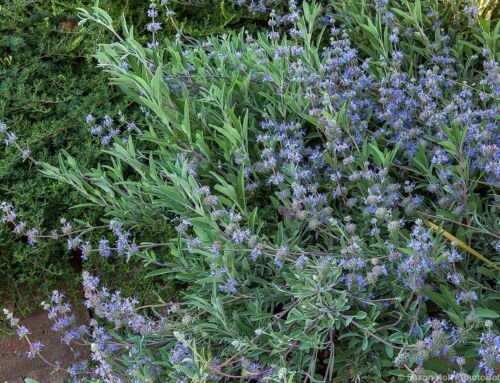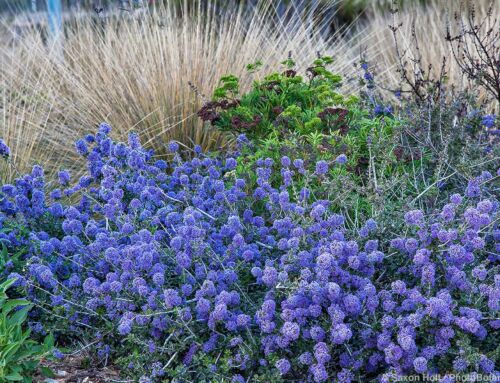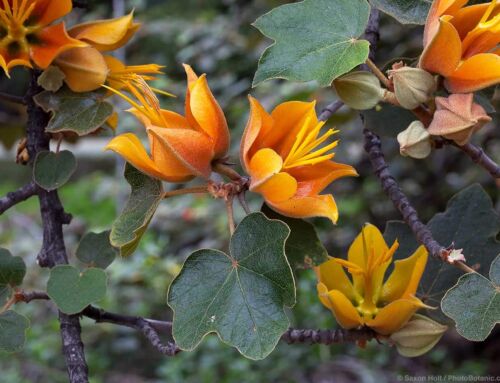Some plants just naturally bring out the child in all of us, and lion’s tail (Leonotis leonurus) is surely one of them. The whorled clusters of softly woolly yet spiky-looking, neon orange flowers can look almost cartoonish –a caricature of flowers– spaced out along emphatically upright, six- or even eight-foot stems.

Leonotis leonurus in full bloom in the San Francisco Botanical Garden
Of the nine to twelve or more recognized species of Leonotis, only lion’s tail, a perennial or subshrub endemic to eastern South Africa, is reliably available in nurseries. Lion’s ear (L. nepetifolia), an annual native from tropical eastern Africa to southern India, is often offered online as seed.
Occasionally mislabeled as L. leonurus, lion’s ear is easily distinguished from lion’s tail by its oval to almost heart-shaped instead of narrowly lance-shaped leaves. Lion’s ear also tends to be awkwardly lanky and weedy looking, while lion’s tail is densely bushy and more attractively shaped, especially if trimmed back after flowering. Both self-sow, but only lion’s ear is listed as invasive in some parts of the world where it has naturalized.

Leonotis leonurus flowers
Like many other plants in the mint family (such as lavenders, sages, phlomis, and thymes), Leonotis species have aromatic leaves that repel deer, and most are valued for their medicinal or culinary properties. Most are also nectar-rich and wildly popular with hummingbirds and bees. While many plants in the mint family bloom from late spring through early summer, Leonotis extends the flowering season well into fall.
Give lion’s tail a site in full sun to light shade, with some afternoon shade in the hottest climates. Good to excellent drainage seems to be the key to success. Growth is most robust in mild-winter climates with at least some summer water. Plants blend beautifully with California natives and flowering stems are stunning in arrangements, both fresh and dried.





Leave A Comment